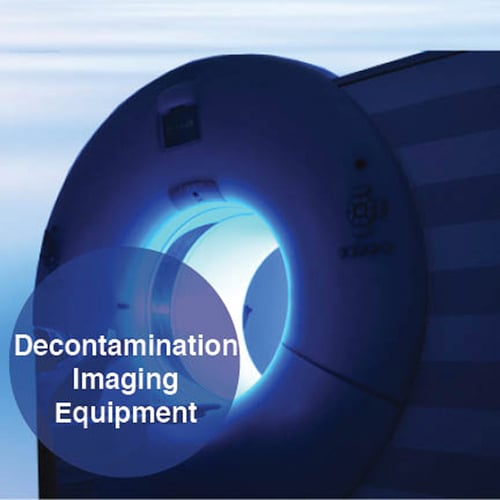Radiology equipment is some of the most expensive investments a practice, clinic, hospital or healthcare facility can make. It’s expensive to purchase and install—and then there’s the required preventative maintenance, on top of that. Of course, preventative maintenance is designed to prevent the need of costly breakdowns that can affect your revenue flow. Now, there’s also a call by the World Health Organization  for additional policies and approaches for decontamination of radiology equipment, and the protection of radiology personnel.
for additional policies and approaches for decontamination of radiology equipment, and the protection of radiology personnel.
The call is in response to the current Ebola virus disease outbreak, but healthcare professionals and facilities would be wise to establish these standards as a standard course of action. A new study has found that the virus can live on surfaces in hospitals for nearly two weeks, including stainless steel, plastic and Tyvek, a material used in Ebola suits. As a result, this poses three areas of concern to radiology departments: protection of radiology staff, protecting and decontamination of imaging equipment like CT, MRI and ultrasonography and imaging of recovered patients after discharge.
Protection of Radiology Staff
First of all, it’s wise to plan for the possibility of an EVD case. This includes having an established policy to limit the number of staff entering the patient’s room, limiting imaging to bedside modalities to avoid patient transport, careful screening to identify potential cases and communication with staff, should a possible case be identified. The use of anterooms and portable isolation chambers to minimize the hazard to health care personnel is also wise. The use of PPE (personal protective equipment) is also important and all radiology personnel should learn the procedures to don and doff the PPE.
Point of Care Imaging
- Ideally, a portable radiology unit would be placed inside a dedicated isolation room. When not in use, it should be stored in a Cold” area outside of the containment room
- The x-ray detector should be double bagged by using fluid impermeable plastic materials.
- The technologist, physician or nurse should wear PPE.
- Once the image is taken, the outer bag should be wiped down with disinfectant twice. The outside bag should be removed and discarded while the single-bagged detector is pulled out of the bag.
- The single bag covering should be wiped down twice with disinfectant wipes
- The detector should be removed and wiped down twice with isopropyl alcohol.
- The portable radiography unit should be wiped down twice with disinfectant wipes and rolled over a mat saturated with disinfectant, then treated with hydrogen peroxide vapor before storage and additional use.
Protection and Decontamination of Radiology Equipment
- Because of uneven edges, crevices, gaps, buttons, unsealed margins and hinges, disinfection with hydrogen peroxide vapor or ultraviolet light is recommended.
- The patient care and treatment rooms shouldn’t have carpet, textile curtains or upholstered furniture.
- Pads and pillows should have impermeable coverings or be discarded after use.
- Linens should also be discarded.
- Contaminated procedure rooms should be cleaned and subject to hydrogen peroxide vapor decontamination.
- Check with radiology equipment manufacturers to determine which disinfectants are safe to use.
In short, it’s important to develop standard operating procedures for the decontamination of radiology equipment BEFORE an emergency. It’s better to have SOP before you need them, than to need them and not have them in place. As always, if you have questions about radiology equipment, installation and service coverage, don’t hesitate to contact the experts at Atlantis Worldwide. To find out more about the checklist for Ebola preparedness, visit here!
For more information on refurbished medical imaging equipment please contact Jeff Weiss at 212-366-9100 or jeffweiss@atlantisworldwide.com
Some blogs you may have missed:
- CT Scanner Slice: Handy Guide
- Choosing The Right X-Ray Isn’t Always Easy
- Going Green with Refurbished & Used Medical Imaging Equipment
- Radiologists, Healthcare and Social Media
- What if you could automatically reduce your CT Dose - Would you?



